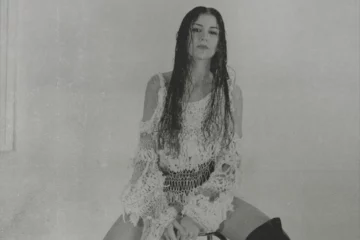On a mild Saturday in spring, 32 right-wing extremists occupy the church Saint-Cornely in the Breton coastal town Carnac. They belong to »Civitas«, a fundamentalist splinter group of Catholicism. Last October, the French government had the organization dissolved. »Civitas« is charged with declaring »war against the Republic«. Yet, five months earlier, the extremists had a rather unassuming goal. They wanted to thwart a concert by drone-composer Kali Malone.

All Life Long
At first glance, there is nothing predestining Malone to be abhorred by the extreme right. Neither her performances nor her online presence are explicitly political. The 29-year-old American rose to fame because of her affirmation of ecclesiastical music. Her breakthrough was 2019’s »The Sacrificial Code«, two crystalline compositions for church organs.
Here, Kali Malone applied a tuning system common during the Renaissance, just intonation, to modernist sensibilities with Jesuitic rigor. This resulted in a stripped-down monochrome, far more interested in the passing of daylight than in the decline of the West. However, the fanatics did get one thing right: Malone’s oeuvre presents a subtle challenge to the relation between music and religion.
»Art and music are powerful, essential and vital because they exist in unexplainable ways, not entirely understandable, nor should they be.«
Kali Malone
This can be seen in her reaction to the Church intrusion. When asked by Resident Advisor, Malone didn’t even attempt to expose »Civitas« as a hate group. Rather she stated: »Art and music are powerful, essential and vital because they exist in unexplainable ways, not entirely understandable, nor should they be.«
Following Malone, one would be amiss to oppose the zealot’s outlandish misconstructions with a »correct« interpretation. Both fail to recognize what is at stake: »Like spirituality, art and music’s function is to raise questions and lead new paths of comprehension and transcendence.« Works of art, thus, are tasked with something traditionally reserved for religious experience: going beyond human limitations.
Opening up the Old
While Malone’s composition can, indeed, feel like a revelation, her practice is patient. She attempts to re-appropriate the history of music. In 2022, Malone took her audiences off guard by composing on the synthesizer of one of minimalism’s elder stateswomen, Élaine Radigue. It was quickly followed by »Does Spring Hide Its Joy?«, a monumental enactment of changes in the sense of time during the Corona pandemic. Possibly due the influence of her collaborator Stephen O’Malley, founding member of the legendary Sun O))) – and, as of late, Malone’s husband –, it is her first album marrying the sense of mission present in early minimalist pieces with the plasticity of newer Drone forms.
Related reviews
Historical references evidently have been striking roots in Malone’s oeuvre for a while. On her newest album, »All Life Long«, they are coming into bloom. Some pieces draw upon the translucent style of »The Sacrificial Code«. Others break away from minimalism. The choral arrangement »Passage Through The Spheres« especially doesn’t take any modernist loans. It is unabashedly Early music – while taking its text from an essay by contemporary philosopher Giorgio Agamben.
Malone reminds us that the Christian tradition doesn’t belong to its self-appointed champions. It’s hardly surprising that this is provoking some. The concert in Carnac had to be cancelled after threats of violence. A lawsuit is pending. But the composer is standing her ground. Vis-à-vis TheQuietus, she recently doubled down: »I still believe it’s so important that we make music in these spaces and have them open to people. I just want to keep that going on.«









